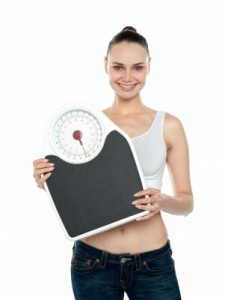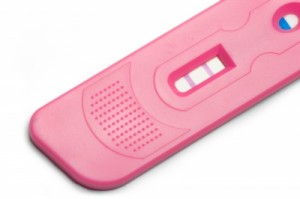Did you know that other than the cesarean section, a hysterectomy is the most common surgical procedure performed on women? And what used to be an extremely invasive procedure can now be done robotically through small minor incisions.
What is a hysterectomy?
A hysterectomy is the surgical removal of the uterus.
Here are a few of the most common reasons why a woman would have a hysterectomy:
- Benign fibroid tumors – Non-malignant tumors can grow and become large. This may inflict pressure on other organs. Fibroids can cause heavy bleeding and/or pelvic pain.
- Cancerous tumors – About 10% of hysterectomies are performed to treat cancers such as cervical, ovarian, or endometrial.
- Uterine prolapse – Uterine prolapse occurs when pelvic floor muscles and ligaments stretch and weaken, providing inadequate support for the uterus.
- Endometriosis – When endometrial cells grow outside of the uterus they can attach themselves to other organs and bleed each month. A woman can experience pelvic pain, pain during sex, and prolonged or heavy bleeding.
- Long-term abnormal uterine bleeding
- Chronic pelvic pain
Are you a good candidate?
If you have any of the above conditions or symptoms, it’s important to talk with your doctor. Drs Chouchani, Sayegh and Bagnarello can help you determine the best course of action for your individual needs. It’s important to remember that for women who have not reached menopause, having a hysterectomy means that menstruation will no longer occur, and pregnancy will no longer be possible.
At Chouchani, Sayegh and Bagnarello we perform the Robotic Hysterectomy with the da Vinci®Surgical System. Using this cutting edge technology, we are able to dramatically decrease pain and speed up the recovery process. Through tiny, 1-2 cm incisions, our surgeons using the da Vinci System can operate with greater precision and control, minimizing the pain and risk associated with large incisions while increasing the likelihood of a fast recovery and excellent clinical outcomes.
Find out more about what you should expect before, during and after a robotic hysterectomy.
Are you a candidate for this type of surgery? Find out more about this amazing procedure. Or call our office at (716) 633-6363 for details.
More
 Yes, it may feel awkward to bring up certain topics with your gynecologist or OB-GYN, but remember—they’ve heard and seen it all. Don’t be afraid to ask questions or bring up any issues you’ve been noticing. In fact, make sure you do! It’s important to be open and honest when it comes to taking care of your sexual and reproductive health. Here are eight things you should definitely discuss with your gynecologist:
Yes, it may feel awkward to bring up certain topics with your gynecologist or OB-GYN, but remember—they’ve heard and seen it all. Don’t be afraid to ask questions or bring up any issues you’ve been noticing. In fact, make sure you do! It’s important to be open and honest when it comes to taking care of your sexual and reproductive health. Here are eight things you should definitely discuss with your gynecologist:
If you’ve ever had unprotected sex. Maybe you slipped up and didn’t use a condom a while back, and since you’ve gotten your period and haven’t noticed any signs of an STD, you think you’re okay, right? Well, some STDs, like chlamydia, are often completely symptomless, while others like HPV can lie dormant for years. Let your doctor know, so she can calculate your risk of disease after having unprotected sex.
If you’re experiencing bleeding after sex. Blood following sex can indicate anything from uterine polyps to endometritis, which are highly treatable, to more serious situations such as cervical cancer. If you experience post-sex bleeding, tell your doctor as soon as possible.
If your period is becoming irregular. If your period is showing up late every month, if your flow is much heavier or lighter than normal, or if you’re experiencing regular spotting between periods, let your doctor know.
If sex hurts or is uncomfortable. Don’t let physical discomfort affect your sex life! Painful sex may be due to a tilted uterus or vaginal dryness. Your doctor can help you figure out—and solve!—the problem.
If you’ve been sexually abused. Your gynecologist can just be someone to talk to, or they can ease your worries about STDs or offer resources that can help you recover.
If you’re taking any medications or supplements. Your doctor should always know what you’re taking, including vitamins or herbal supplements—especially if you’re starting a new type of birth control, trying to get pregnant, or in need of surgery.
If you’re thinking about pregnancy and fertility. If you’re considering trying to get pregnant in the next year, definitely tell your doctor. They’ll offer tips and medical advice that they wouldn’t normally bring up at a regular visit. And if you’re concerned about your fertility for any reason, bring that up, too.
At Chouchani, Sayegh and Bagnarello, we care about the overall health of our patients and believe in open and honest communication. If you need to discuss any of these issues with a medical professional, please give us a call to make an appointment.
Photo courtesy of freedigitalphotos.net.
More
 It’s important for women to achieve and maintain a healthy weight, to prevent related medical issues. But what if you’re not at a healthy weight? How can you get there without resorting to dietary fads and potentially dangerous supplements?
It’s important for women to achieve and maintain a healthy weight, to prevent related medical issues. But what if you’re not at a healthy weight? How can you get there without resorting to dietary fads and potentially dangerous supplements?
Losing weight boils down to two things: eating less and moving more. The combination of cutting calories and increasing activity is the only proven way to drop the pounds. Best of all? It’s easy if you know how. Here are 8 simple tips that will help you cut or burn extra calories and lose about a pound of weight a week—without feeling deprived or obsessing about calorie counting.
- Make Smart Food Swaps. If you trade in your morning bagel for an English muffin, you’ll slash 220 calories. Using one whole egg and two egg whites to make an omelet and switching pork sausage for turkey sausage will cut about 125 calories each for a protein-packed breakfast.
- Know How Many Portions You Eat. When you check the calorie count on an item, check the portion size also. Something may be 100 calories a portion, but you may be eating 5 portions at a time. Taking the time to measure out one serving can save you hundreds of calories.
- Make Sure To Move. Do you take a lunch hour? Just taking a walk every day for an hour can burn up to 500 extra calories. Or try wearing a pedometer and aim for walking 10,000 steps a day—the equivalent of about 5 miles—and you’ll burn those calories without hitting the gym.
- Surprise Your Tastebuds. Having a sandwich? Use hummus or mustard instead of mayonnaise, and substitute a roll for sliced bread, and you’ll cut about 200 calories. If you order a side, opt for a salad instead of fries to save another 300 calories and fill up on fiber.
- Fool Your Eyes. If you downsize your plate, such as going from a 12-inch to a 9-inch, you’ll cut 500 calories without feeling deprived.
- Stand Up For Yourself. You can burn up to an extra 500 calories a day by standing, rather than sitting, whenever possible! At work, try standing to make a phone call or read a report.
- Drink Water. Drink plenty of water, especially in place of soda or other sugary drinks, which can save you about 300 hundred calories a day if you skip two cans. Also, drinking enough water daily might boost your metabolism so you burn even more calories. Is plain water too boring? Add sliced cucumbers, lemon or limes, or even low-calorie flavor packets.
- Get Enough Sleep. This can be tough, especially for moms, but people who get less than 6 hours of sleep eat up to 300 calories more during the day because that lack of sleep triggers production of your hunger hormone. Each extra hour of sleep could save you 100 calories!
Call Chouchani, Sayegh and Bagnarello if you’d like to work with doctors who truly care about the overall health of our patients.
More
 If you’re pregnant or thinking about becoming pregnant, the topic of breastfeeding has probably come up. Maybe you’re determined to do it, maybe the thought makes you nervous or uncomfortable. In honor of National Breastfeeding Awareness Month, we’d like to share the following information about what breast milk provides to help you make—or feel good about—your decision:
If you’re pregnant or thinking about becoming pregnant, the topic of breastfeeding has probably come up. Maybe you’re determined to do it, maybe the thought makes you nervous or uncomfortable. In honor of National Breastfeeding Awareness Month, we’d like to share the following information about what breast milk provides to help you make—or feel good about—your decision:
Better Nutrition: Science cannot replicate everything that makes breast milk the ideal food for infants. The vitamins and nutrients in a mother’s breast milk are easier for babies to digest, and it has the perfect amount of protein, fat, and carbohydrates required by your baby. Best of all, the composition of your breast milk changes as your baby grows, providing him or her with specific developmental and nutritional needs.
Better Health: Colostrum, the first milk, has high concentrations of antibodies that help protect the mucous membranes in the throat, lungs, and intestines of your newborn. And breastfed kids are less likely to contract childhood diabetes, multiple sclerosis, heart disease, and cancer before the age of 15. Breastfeeding can protect your child from asthma, bronchitis, ear infections, pneumonia, diarrhea and urinary tract infections, and breast-fed children have a decreased risk of tooth decay.
Boosted Brain Function: According to recent research, young children who were breastfed as infants scored higher on intelligence tests. Breastfeeding can increase a baby’s brain growth by 20 to 30 percent. The longer and more exclusively children are breastfed, the more intelligent they will become later in life.
Bonding: Breastfeeding and the closeness and comfort that come along with it can strengthen the bond between a mother and her baby. Physical contact is important to babies, as it helps them feel warm and safe. And the skin-to-skin contact boosts the mother’s oxytocin levels—oxytocin is a hormone that helps breast milk flow and can calm the mother.
Better Health for Mom, Too: It’s been proven that breastfeeding lowers the risk of breast cancer, ovarian cancer and anemia in mother, and it helps you lose your pregnancy weight.
Still not convinced? You can at least think about giving breastfeeding a try—that colostrum you produce in the first couple of days is called “liquid gold” for a reason.
Need support? There are many breast feeding resources available in Western New York. or you can call us here at Chouchani, Sayegh and Bagnarello. Our goal is to help you and your baby get the best possible start in life.
Photo courtesy of freedigitalphotos.net.
More
 You think getting pregnant will be easy. You have sex, you get pregnant, right? But in reality, life doesn’t always work that way. If you’re trying to conceive, these simple health changes can help boost your chances of conception.
You think getting pregnant will be easy. You have sex, you get pregnant, right? But in reality, life doesn’t always work that way. If you’re trying to conceive, these simple health changes can help boost your chances of conception.
If you’re a woman trying to get pregnant, consider:
Managing Your Weight
Being underweight or overweight can delay your ability to conceive. Talk to your doctor about what is a healthy weight for you and how best to achieve it. Use these summertime healthy habits to get started.
Watching What You Drink
Drinking too much coffee (or other caffeinated beverages) or too much alcohol can impair your fertility. If you drink coffee or soda, monitor your intake to make sure you stay under 200 to 250 milligrams of caffeine a day.
Studies on alcohol intake and women’s fertility have produced mixed findings. But Swedish researchers have found that women who drank two alcoholic beverages a day decreased their fertility by nearly 60%. Once again, moderation is key.
Eating Better
To make sure your body has enough of the vitamins and minerals it needs in order to conceive, eat a wide range of fruit and vegetables, eat more nuts, seeds and oily fish, and eat less meat.
If you and your partner are working together to increase your chances of getting pregnant, here are some tips just for him, and a few for both of you!
Protect Those Sperm
Okay, the idea that switching to boxers instead of briefs will boost fertility by keeping genital temperatures down is basically an old wives’ tale. But men should still avoid hot tubs or taking regular hot baths. And a man who wants to be a father probably shouldn’t keep his laptop on his lap for extended periods of time.
Stop Smoking
Smoking cigarettes can impair both men’s and women’s fertility. Smoking can reduce sperm production and damage DNA, and it affects how receptive the uterus is to the egg. And in men, smoking can reduce sperm production and damage DNA. (Follow these ideas to quit smoking.)
Experts also strongly suggest…
Timing Intercourse Wisely
Take advantage of what doctors call the “fertile window,” the six days that end on the day of ovulation. Pregnancy is most likely to occur with intercourse within the three days before ovulation.
Avoiding Pesticides and Other Harmful Chemicals
Exposures to pesticide, especially agricultural pesticides, may harm both men and women’s fertility. So will exposure to some solvents and toxins, such as those used in printing businesses and dry cleaning establishments.
Any more questions? If you’d like to talk to a doctor about your ability to conceive or how you can increase your chances of conception, make an appointment Chouchani, Sayegh and Bagnarello today.
Photo courtesy of freedigitalphotos.net.
More
 Hormone replacement therapy, or HRT, was once called the “Elixir of Youth.” Women’s doctors gave them medications containing female hormones to replace the ones the body doesn’t make after menopause, using HRT to treat menopausal symptoms. It was also thought to help prevent heart disease and possibly dementia.
Hormone replacement therapy, or HRT, was once called the “Elixir of Youth.” Women’s doctors gave them medications containing female hormones to replace the ones the body doesn’t make after menopause, using HRT to treat menopausal symptoms. It was also thought to help prevent heart disease and possibly dementia.
Then, large clinical trials showed health risks.
What are the current recommendations?
Doctors no longer prescribe hormone therapy for heart disease or memory loss prevention. However, further research and new evidence show that hormone therapy may be a good choice for certain women, depending on their risk factors.
Who should consider hormone therapy?
The benefits of hormone therapy may outweigh the risks if you’re healthy and:
- Experience moderate to severe hot flashes or other menopausal symptoms
- Have lost bone mass and either can’t tolerate or aren’t benefitting from other treatments
- Stopped having periods before age 40 (premature menopause) or lost normal function of your ovaries before age 40 (premature ovarian insufficiency)
Why? Because women who experience early menopause, particularly those who had their ovaries removed, have a higher risk of:
- Coronary heart disease
- Earlier death
- Parkinsonism (Parkinson’s-like symptoms)
- Dementia
- Anxiety or depression
- Sexual function concerns
Who should avoid hormone therapy?
Women with current or past history of breast, ovarian or endometrial cancer, blood clots to the legs or lungs, stroke or liver disease should not take hormone therapy. Smokers should also not take hormone therapy.
If your menopause symptoms started after age 45 and are not bothersome, you shouldn’t need hormone therapy to stay healthy. There are other strategies you can follow to reduce the risk of conditions such as osteoporosis and heart disease.
If you use hormone therapy, how can you reduce risk?
Work with your doctor to:
- Find the best product and delivery method for you. You can take estrogen in the form of a pill, patch, gel, or vaginal cream, ring or suppository.
- Minimize the amount of medication you take. Use the lowest effective dose for the shortest amount of time needed to treat symptoms.
- Have regular screenings such as mammograms and pelvic exams and keep in touch with your health care provider to ensure that the benefits of hormone therapy continue to outweigh the risks.
- Make healthy lifestyle choices, such as exercising, eating a healthy diet, maintaining a healthy weight and managing chronic health conditions such as high cholesterol or high blood pressure.
Your age, type of menopause and time since menopause began play a significant role in the risks associated with hormone therapy. Educate yourself and talk with your doctor about your personal risks.
At Chouchani, Sayegh and Bagnarello, we talk to each and every patient about making the best possible choices for their health. If you’d like to work with a practice that cares, please call any time.
Photo courtesy of freedigitalphotos.net.
More
 There has been a lot of controversy surrounding mammograms in recent years, but the American Medical Association, the American College of Obstetricians and Gynecologists, the American College of Radiology, the American Cancer Society, the National Cancer Institute, and the National Comprehensive Cancer Network have all issued guidelines saying that all women should be eligible for screening mammograms starting at age 40.
There has been a lot of controversy surrounding mammograms in recent years, but the American Medical Association, the American College of Obstetricians and Gynecologists, the American College of Radiology, the American Cancer Society, the National Cancer Institute, and the National Comprehensive Cancer Network have all issued guidelines saying that all women should be eligible for screening mammograms starting at age 40.
With that said, what do you need to know about this procedure?
What exactly is a mammogram?
It’s a safe, low-dose radiographic procedure that images the internal tissues of your breasts. There are two types, screening mammograms and diagnostic mammograms. Screening mammograms are the type you get every year to check for breast cancer, even if you have no signs or symptoms of the disease. Diagnostic mammograms are used to check for breast cancer after a lump or other sign of the disease has been found.
Do mammograms hurt?
Well, they’re not comfortable. You’ll have to strike some awkward poses in front of a machine while each breast gets compressed between a platform and a paddle. But—the pain is not constant. The standard mammography takes 15-30 minutes, and your breast is only compressed for a few seconds during each pose. For the most part, having a mammogram is more uncomfortable and embarrassing than painful. Don’t let a few seconds of discomfort scare you off!
Why is it important for women to get mammograms?
According to the National Cancer Institute, annual mammograms can detect cancer early — when it is most treatable. They can show changes in the breast up to two years before a patient or physician can feel them. Mammograms can also prevent the need for extensive treatment for advanced cancers and improve chances of breast conservation.
When should I start getting mammograms?
In the aftermath of the controversy mentioned above, women have received conflicting messages about how old they should be when they have their first mammogram and how often they should get one. The first thing you should know is that women who are high risk for breast cancer, due to family history, a genetic predisposition such as the BRCA1 or BRCA2 mutation or radiation exposure early in life may be told to start earlier, around the age of 35. Discuss your risk factors with your doctor.
Otherwise, The American Cancer Society, the National Cancer Institute, the American College of Radiology, the American College of Obstetricians and Gynecologists, Susan G. Komen for the Cure, and the American Medical Association all support starting at age 40 and getting a mammogram every 1 to 2 Years.
The US Preventive Services Task Force, the American Academy of Family Physicians, the American College of Physicians, the National Breast Cancer Coalition, the Dr. Susan Love Research Foundation, and the World Health Organization say you should start at age 50 and get a mammogram every 2 years.
At Chouchani, Sayegh and Bagnarello M.D., we discuss risk factors and proactive procedures with all of our patients. Want to know more? Call us anytime.
Photo courtesy of freedigitalphotos.net
More
 Summer in Western New York is a special time—especially after a long, hard winter! Most of us enjoy the longer days, the sun and the heat. This summer, why not get more out of this time of year by integrating some healthy habits into your daily routine? Here are a few ideas that can help you get started:
Summer in Western New York is a special time—especially after a long, hard winter! Most of us enjoy the longer days, the sun and the heat. This summer, why not get more out of this time of year by integrating some healthy habits into your daily routine? Here are a few ideas that can help you get started:
- Buy Local Produce: Between farmers’ markets, roadside stands and supermarkets that buy from nearby suppliers, it’s easy to find locally grown fresh produce. Buying locally means your produce is fresher and retains more nutrients—and it’s better for the environment, too! Visit a market near you to shop for a week’s worth of salad ingredients, fruits for a healthy dessert, or a side vegetable for your next weekend barbeque. When fruits are in season, stock up and freeze some for use in the winter.
- Get Moving: Make the most of the warmer temperatures and longer days by swimming laps at a community pool, planning a hike to explore a local park, or riding your bike instead of driving to run small errands. Or get a running/walking buddy to keep you company while you work toward a goal.
- Protect your skin. Yes, sunlight is a major source of Vitamin D, and we enjoy full doses of it when we can. But you need to take precautions and protect your skin. Always wear sunscreen with a minimum SPF of 15 and reapply it regularly. If you’re going to be outside for hours at a time, wear a hat and other protective clothing. The sun’s rays are strongest between 10 a.m. and 3 p.m.
- Drink lots of water. Many people find it easier to drink enough water in the summer, when you’re more aware of having to keep hydrated. Water is more refreshing than sugary juices or carbonated beverages, while unsweetened iced tea is a good substitute for those who don’t enjoy plain water all the time. Keep an insulated bottle of water or tea with you at all times!
At Chouchani, Sayegh and Bagnarello, we believe a healthy community is a strong community, so we encourage our patients and their families to live healthier lifestyles. Want to know more about our OB-GYN practice located in Western New York? Call us anytime.
Photo courtesy of freedigitalphotos.net
More
 Gluten-free has become the big buzzword in dieting right now. You’ve probably heard or read about how much weight you’ll lose if you go on a gluten-free diet. But before you go on a gluten-free diet yourself, here are some things to consider:
Gluten-free has become the big buzzword in dieting right now. You’ve probably heard or read about how much weight you’ll lose if you go on a gluten-free diet. But before you go on a gluten-free diet yourself, here are some things to consider:
- Gluten-free diets can be seriously deficient in important nutrients, such as fiber, iron, folate, niacin, thiamine, riboflavin, calcium, vitamin B12, phosphorus and zinc. Why? Because many gluten-free products are made with refined, unenriched grains and starches, which are high in calories but low in vitamins and minerals.
- Because wheat is ubiquitous in the American diet, completely eliminating gluten requires giving up most breads, crackers, breakfast cereals, conventional pastas, pastry goods, and a wide range of processed foods that contain small amounts of gluten.
- Most gluten-free alternatives, such as pasta and bread, cost significantly more than their conventional counterparts. Some cost twice as much!
- Gluten-free diets were designed to combat celiac disease, a serious autoimmune disorder that virtually destroys the intestinal tract. If you self-diagnose, or decide to go gluten-free to lose weight, you could put yourself in danger—because you would never be able to get an accurate diagnosis of your symptoms if you are indeed allergic to or intolerant of gluten.
Why do people lose weight on gluten-free diets?
When people eliminate gluten and lose weight, they assume it’s because of the lack of gluten they’re eating. But most likely, they lose the weight because they’ve cut out the excess calories found in many flour-based snack foods. You’d get the same results from eating more fruits and vegetables and exercising more—and you could still eat bread, pasta or birthday cakes in healthy moderation!
What if I really shouldn’t eat gluten?
Are you experiencing any combination of the following symptoms? By themselves, they don’t necessarily indicate a problem with gluten, but in combination, they might:
- Gastrointestinal issues, like intense bloating, diarrhea and constipation
- Low iron
- Itchy skin rashes on your arms, torso, face, buttocks, elbows and hairline
- Migraine headaches that start within an hour or two of ingesting gluten
- Joint pain
If so, your first step should be to have a complete check-up with your physician.
You may then have to consult with medical specialists, such as an allergist for wheat allergy and a gastroenterologist for celiac or another gastrointestinal disease, to narrow down your diagnosis and treatment. If you have a wheat allergy, you have to avoid wheat, but you don’t have to avoid gluten from other grains. If you have celiac disease, you must avoid gluten altogether.
The bottom line: If you think you may have a problem with gluten, get tested. If you don’t, going truly gluten-free has no health benefits.
Any questions?
Please call Chouchani, Sayegh and Bagnarello, where we believe in educating our patients to live the healthiest possible lifestyles. Our Ob-Gyn group has been serving the Western New York community for over 30 years.
Photo courtesy of freedigitalphotos.net
More
 You may already know how hard it is to try to quit smoking. You get cravings, you get irritable, and you find yourself fighting the urge to have “just one” cigarette. But now that you’re pregnant, you know it’s never been more important to quit. Here are some tips to help you be successful and have a healthier pregnancy:
You may already know how hard it is to try to quit smoking. You get cravings, you get irritable, and you find yourself fighting the urge to have “just one” cigarette. But now that you’re pregnant, you know it’s never been more important to quit. Here are some tips to help you be successful and have a healthier pregnancy:
1. Have a plan
The first step toward setting yourself up for success? Setting up a plan. Quitting smoking isn’t as easy as just throwing your last pack away. You need to know what you’re going to do when those cravings hit.
- Set a quit date. Make it public, and make yourself accountable, by telling your friends, family and co-workers. And make it as soon as possible!
- Figure out which way will work best for you—going cold turkey or cutting back gradually.
- Have a strategy for handling cravings. They can be difficult, so remind yourself that they only last a few minutes. Chew a piece of gum, have a piece of candy, go for a quick walk or make a phone call. Do something that distracts your mind for a few minutes until the craving passes.
2. Ask for support from people around you
Support from your friends, family and co-workers can double your chances of success. For example, if any of them are ex-smokers, ask if you can give them a quick call when a strong craving hits. If any of them still smoke, ask them not to smoke in front of you.
3. Talk to your doctor or other healthcare practitioner
However you decide to quit smoking, your doctor can help you. He or she can give you information about local support programs, talk to you about nicotine replacement therapy and encourage you through a difficult time. Continue to be honest with your practitioner over the course of the pregnancy about your successes and setbacks, so they can pay extra attention to the growth and development of your fetus if necessary.
4. Learn to motivate yourself
Giving up cigarettes is hard work. But as a pregnant woman, you have one of the best incentives to give up! Keep reminding yourself of the benefits of quitting, both for your unborn baby and your own health.
5. Don’t give up if you have a relapse
If you do start smoking again while trying to quit, don’t punish yourself, and don’t give up. Your ultimate goal is to kick the habit for good, so just go back to your plan. Don’t think of yourself as a failure, and be assured that your cravings and withdrawal symptoms will fade within weeks.
At Chouchani, Sayegh and Bagnarello, our goal is to help you have a safe and healthy pregnancy. Please contact us if you’re looking for support to quit smoking, we can provide resources and tools to help you kick the smoking habit for good!
More









